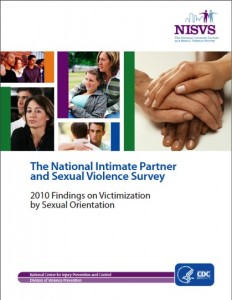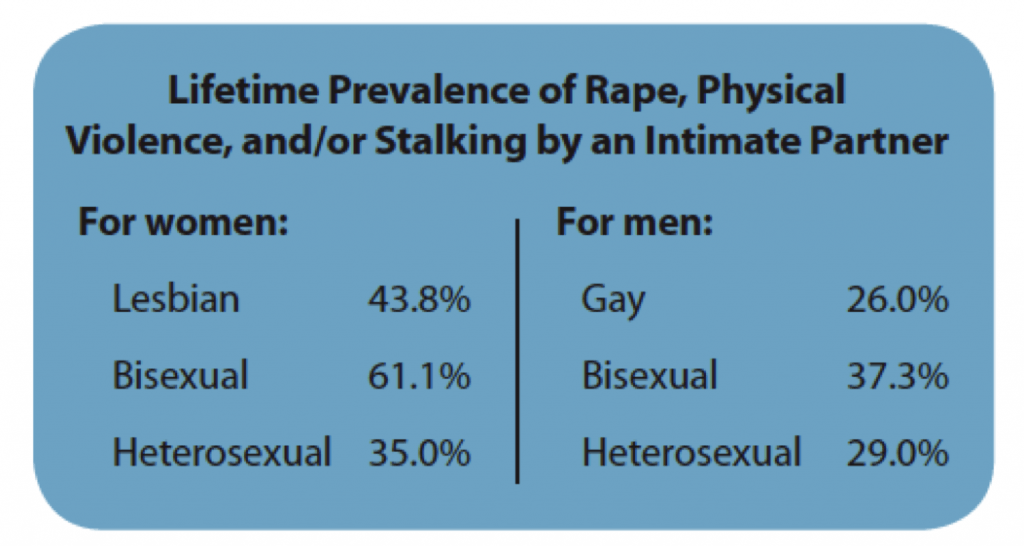First federal study of violence among lesbian, gay and bisexual communities
 The Centers for Disease Control and Prevention’s new report, The National Intimate Partner and Sexual Violence Survey: 2010 Findings on Victimization by Sexual Orientation, shows that lesbian, gay and bisexual (LGB) people experience sexual violence and intimate partner violence at the same or higher rates as heterosexual people.
The Centers for Disease Control and Prevention’s new report, The National Intimate Partner and Sexual Violence Survey: 2010 Findings on Victimization by Sexual Orientation, shows that lesbian, gay and bisexual (LGB) people experience sexual violence and intimate partner violence at the same or higher rates as heterosexual people.
The report demonstrates the need to ensure that sexual violence and domestic violence services and prevention efforts address lesbian, gay, bisexual and transgender individuals.
The report concludes:
These findings underscore the broad range of violence experienced by LGB individuals in the United States and reiterate the important need for immediate, but thoughtful, actions to prevent and respond to the violence occurring within LGB populations. A more comprehensive plan for violence prevention that includes LGB individuals is needed to address issues that include effective prevention efforts focused on intimate partner violence, sexual violence, and stalking. In addition, the inclusion of LGB persons in national violence research will assist in furthering a more comprehensive understanding of intimate partner violence, sexual violence, and stalking.
Sharon Stapel, Executive Director of the New York City Anti-Violence Project, describes the importance of this report:
This report is historic in that for the first time the federal government is measuring the prevalence of intimate partner and sexual violence experienced by lesbian, gay and bisexual communities and found that the prevalence was similar to, and in some cases higher than, heterosexual communities.

The report makes several specific recommendations to “ensure that prevention and intervention resources be available for these groups [lesbian, gay and bisexual people] at commensurate levels to those available for heterosexual populations.”
The report also calls for broad-based prevention efforts:
…it was clear that among women who experienced rape, bisexual women were more likely to experience their first rape between the ages of 11 and 17 years, as compared to heterosexual women. Many people may not identify their sexual orientation during their adolescence, making it difficult to target specific subgroups of adolescents for prevention, further strengthening the need for broad-based prevention efforts that include individuals as well as communities.
Click here for the full report, fact sheet and frequently asked questions.
For more information about sexual violence and intimate partner violence in the LGBTQ communities, check out these resources released in 2012:
- National Sexual Violence Resource Center information packet Sexual violence & individuals who identify as LGBTQ (Listen to the podcast with Liz Zadnik discussing this report),
- National Coalition of Anti-Violence Programs report Intimate Partner Violence in Lesbian, Gay, Bisexual, Transgender, Queer, and HIV-Affected (LGBTQH) Communities in the United States in 2011.
